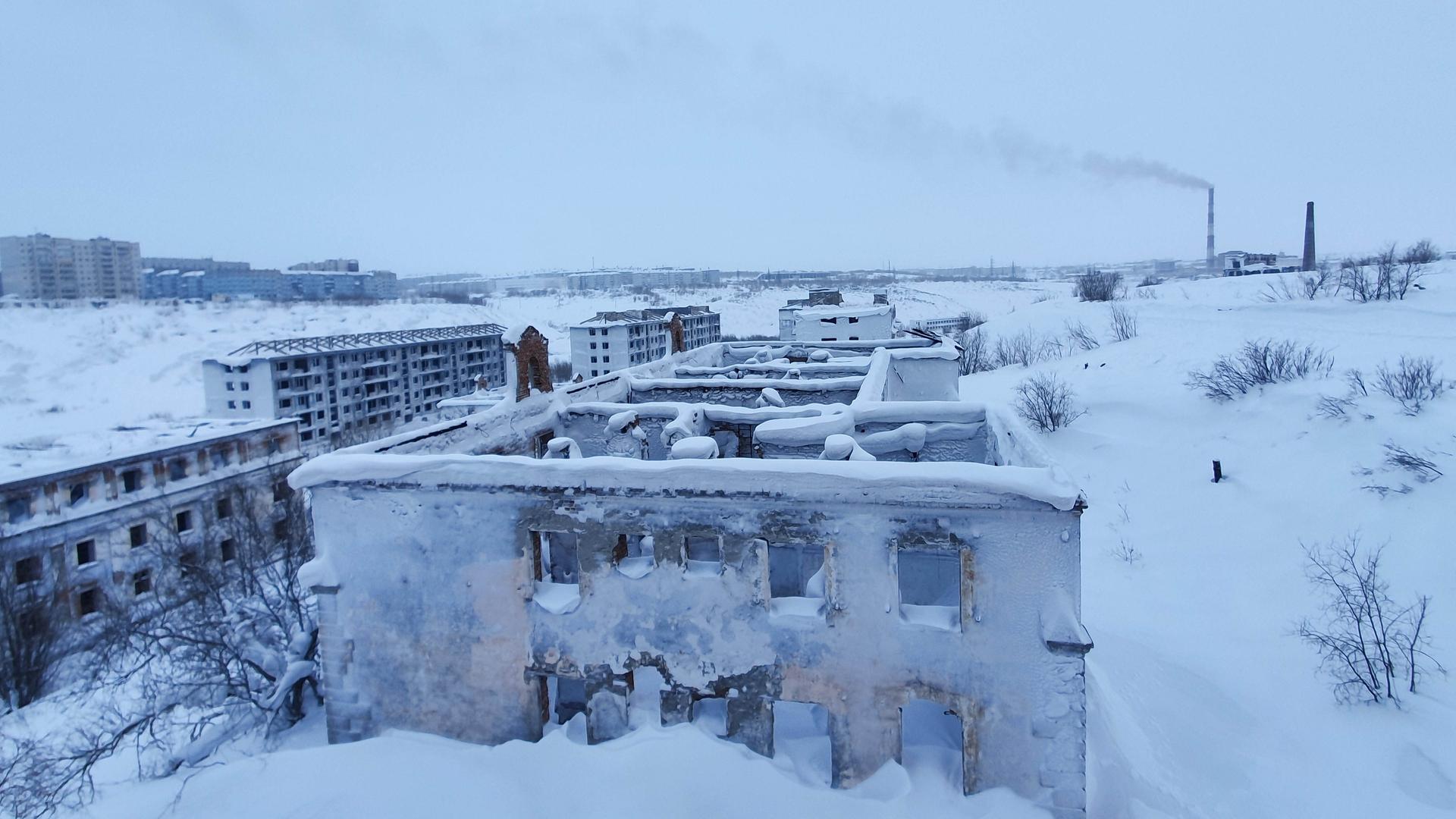Lyudmila Ivanova and her fiance came to the Arctic from a village in southern Russia in 1978 in search of a better life. Their destination was Vorkuta, a coal-mining city 90 miles north of the Arctic circle.
Vorkuta, which means “place of bears” in the language of Indigenous Nenets reindeer herders, was nicknamed the “capital of the world” because people from all over Eastern Europe and Central Asia had come there during the Soviet period for well-paid work and benefits — despite temperatures as low as minus 60 degrees Fahrenheit.
Now, a better nickname may be “the fastest dying city in Russia.” The lure of higher wages and better housing is long gone, and the population has plummeted. Cracking walls and living rooms filled with snowdrifts are a common sight in the 35-mile ring of mining “settlements” that make up the city, as the windswept, treeless tundra slowly reclaims the urban territory. When darkness falls, often just a handful of lights can be seen in apartment buildings of 100 units or more.
Related: Ukrainian eyeglasses market brings pains of deindustrialization into focus
Ivanova, now 62, feels trapped. Like tens of thousands who worked at least 15 years in the far north, she has been waiting for more than two decades to be “resettled” further south under a subsidized housing program started in 1993. Of 14,000 Vorkuta residents on the list, only about 220 are resettled each year.
“I’m a hostage of the north.”
“I’m a hostage of the north,” Ivanova said on a long Arctic winter evening. Despite health problems, Ivanova still works at a heating plant, earning just $440 a month — too little to afford moving without government help. “If you would have told me I’d be left high and dry … and that I wouldn’t be able to move away, then I wouldn’t have come here.”
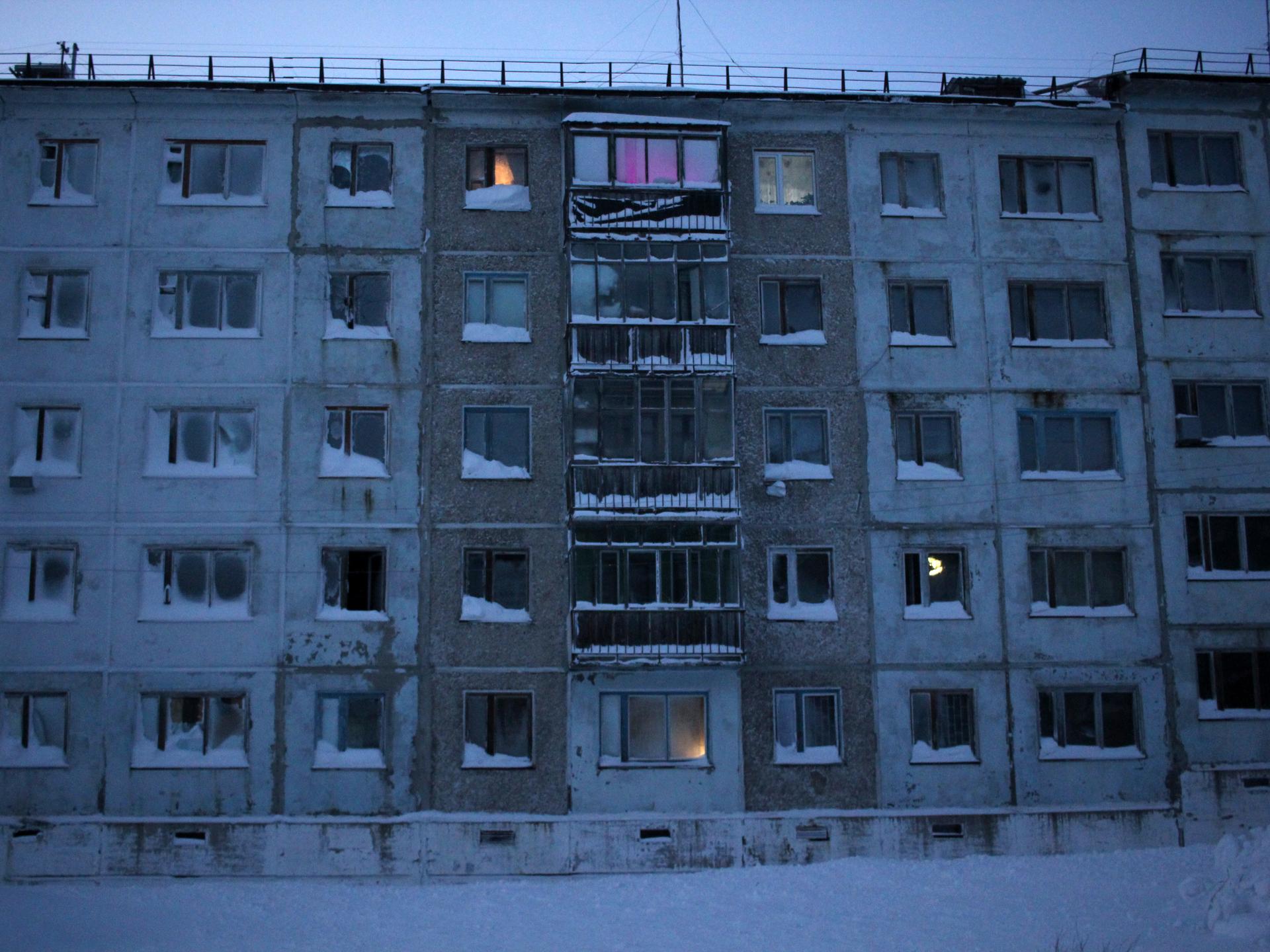
Ivanova’s plight clashes with Russian President Vladimir Putin’s quest to conquer the warming Arctic. In April, he promised that the Northern Sea Route between Murmansk and Vladivostok would grow to rival the Suez canal as a shipping lane. Seven military bases have been built or reopened along the northern coast since 2013. Last month, the government approved huge tax breaks for oil and gas development in the Arctic, including offshore projects.
Related: As the Arctic warms up, a ‘new ocean’ is bringing new commerce to the top of the world
But the paradox is that the north is emptying out even as Russia tries to develop it. Vorkuta was built during Joseph Stalin‘s reign on the backs of starved Gulag prisoners, 200,000 of whom died. After Stalin’s death, the Soviet Union lured more willing workers north with doubled wages and early retirement. But since the fall of the communist system that developed the region, 1 million people have left the Arctic zone. Far more have fled Siberia and the far east. Today, northern resources are being dug and drilled by dormitories of fly-in laborers rather than cities of Soviet shock workers.
After the Soviet Union collapsed in 1991, hyperinflation vaporized Russians’ savings overnight, including what workers in places like Vorkuta had put away to retire in the “middle latitudes.” The average apartment in central Russia costs 30 times as much as in Vorkuta.
“Money people saved to buy an apartment turned into only enough to buy a sausage,” said Nadezhda Zamyatina, a geography professor at Moscow State University who has consulted several northern cities on development.
The torpid pace of the resettlement program makes some suspicious that the government is secretly trying to stem Arctic population loss. According to Zamyatina, the Soviet idea of “anchoring” people in the north continues, even though it’s not explicitly stated in policy documents.
“Those who can, flee and buy an apartment somewhere else,” said local activist Vladimir Zharuk, 58. “If they resettle us, they won’t be able to attract new people.” A coal miner until he was injured in a collapse five years ago, Zharuk has been on the list for 23 years.
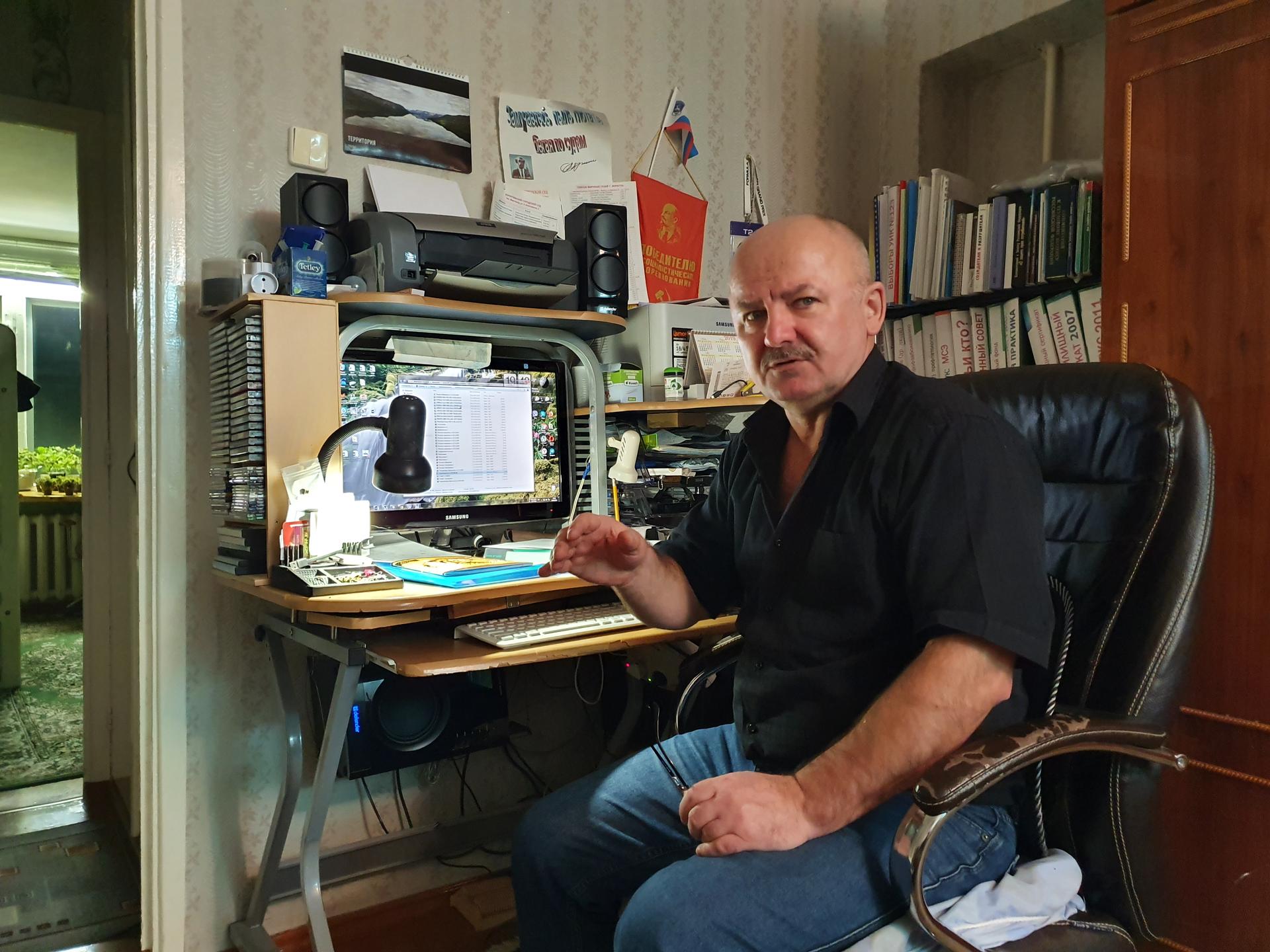
An Arctic defense strategy issued by Putin last week said the declining population of the area was one of the main threats to national security, and the Arctic development ministry has called for $5 billion in spending by 2035 to address problems with employment, housing, transport, healthcare and quality of life.
Related: How Chinese tourism is changing one Russian Arctic village
Despite its problems, with 50,000 residents, Vorkuta is still the fourth largest city in the Arctic. It hopes to benefit from a new race for resources and Putin’s investment in the region.
Thanks to the transpolar mainline railway — a brutal Gulag project abandoned after Stalin’s death that is now set to be completed — Vorkuta will eventually have a connection with the oil and gas towns of western Siberia. The Russian military is also building a radar base in Vorkuta to scan the sky for missiles coming over the north pole, the shortest route of attack from the United States.
In August, Putin ordered the Komi region to draft a development plan that would create jobs in Vorkuta. The plan, which is currently under review, asks Moscow for more than $700 million to develop a new coal mine and keep workers in Vorkuta employed. Of the city’s 13 coal mines — most originally dug by Gulag laborers — only five are still operational, employing about 4,000 people.
Now, all of Vorkuta’s mines are run by Severstal, a steel giant owned by Alexei Mordashov, Russia’s fourth-richest man. Still, a spokesman told The World, the company needs more than $1 billion in tax breaks and subsidies to develop new reserves there, otherwise, output will dwindle to zero by 2037.
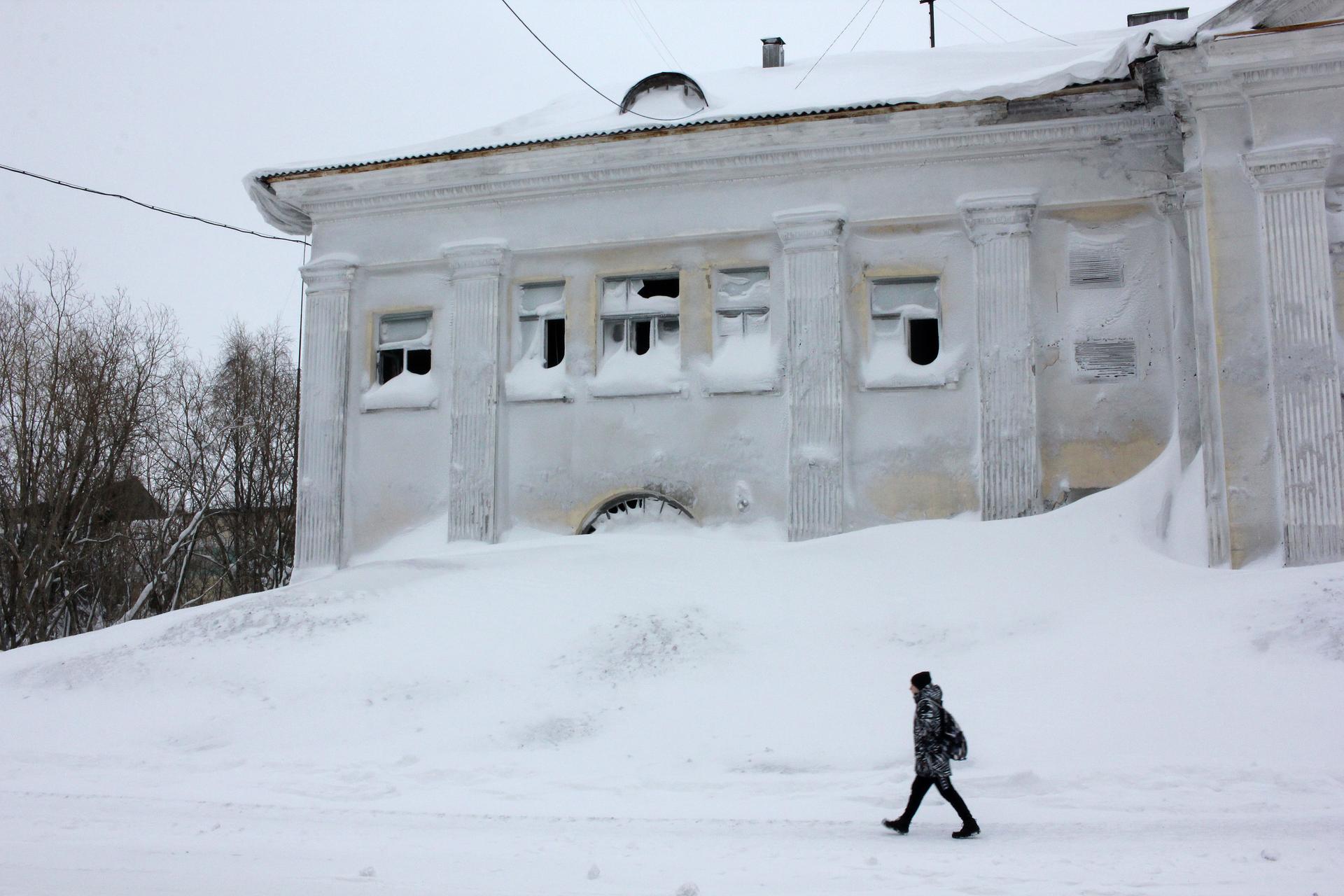
But the Komi economic minister, Konstantin Plekhov, has said Moscow is unlikely to allocate significant funds to develop the new mine. If Severstal or another investor doesn’t step up, Vorkuta will likely face an even harder fall, something that Mayor Igor Guryev is trying to avoid. Guryev has even offered free premises to open a data center in a fanciful scheme to shift from coal mining to bitcoin mining: “It won’t need cooling during the nine months of winter here.”
Related: How one Russian city makes it through the polar night
Northern cities that lack oil and gas deposits, however, are unlikely to flourish in the market economy. Vorkuta made headlines last year after it was revealed that an apartment could be bought for as little as $500. Many of those leaving simply give their home to the city, which spends more than $7 million a year on maintaining 5,000 empty apartments. It is gradually moving residents from the 35-mile ring of decaying settlements to vacant apartments in the city center, a process euphemistically called “controlled contraction.”
Mayor Guryev and other officials insist that the state simply doesn’t have the money to relocate people from his and other northern cities to the middle latitudes. In the regional development plan submitted to authorities last year, the city has requested additional federal funds to resettle the 9,000 Vorkuta residents on the list who are retired or have health problems.
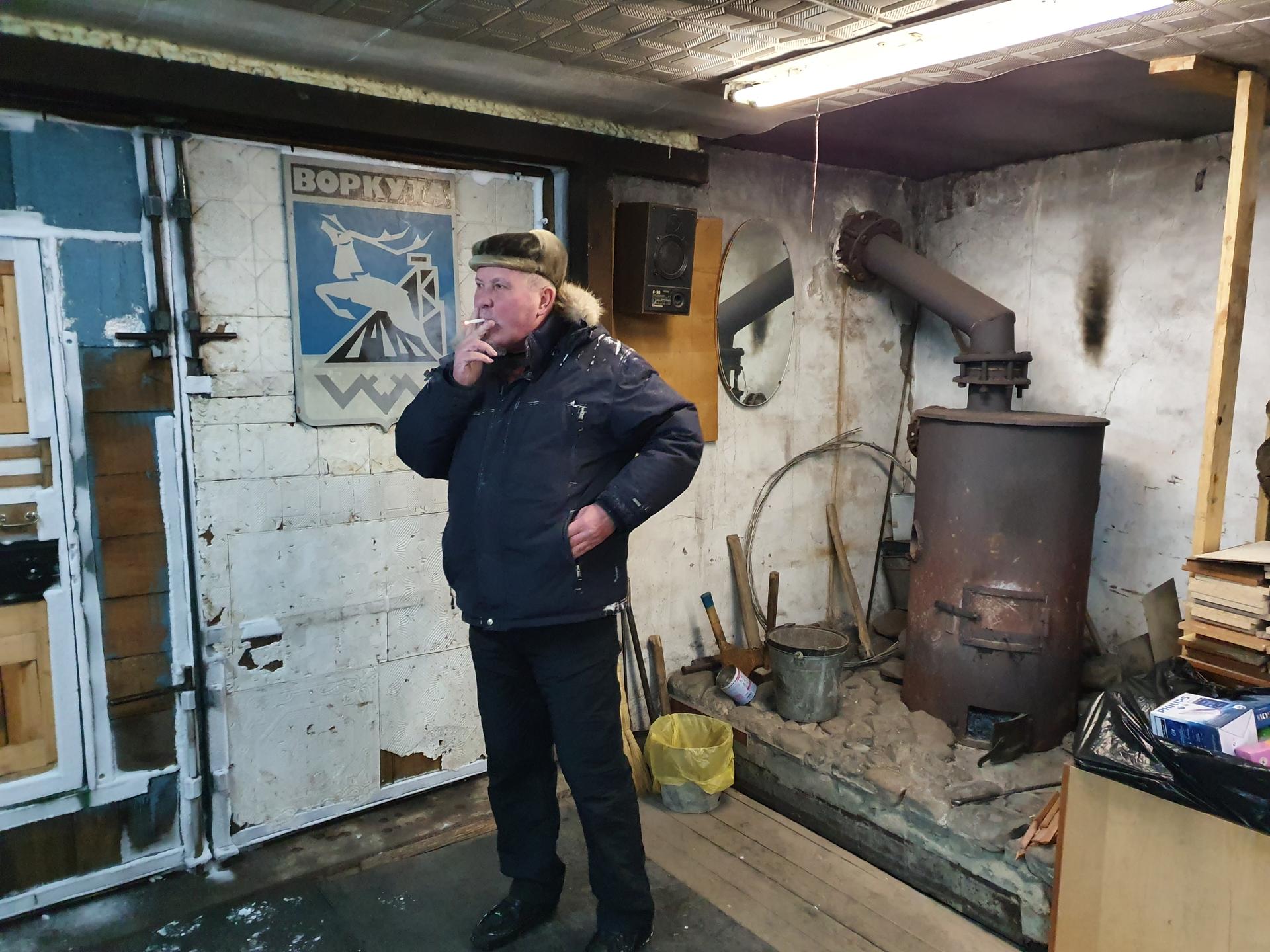
“The only place you can relocate from here is to the third district. That’s where the cemetery is.”
“The only place you can relocate from here is to the third district. That’s where the cemetery is,” former coal miner Gennady Skripnik, 58, said as he smoked a cigarette in a garage in the decaying Vorkuta settlement of Severny.
For Lyudmila Ivanova, the hopeful move north in the 1970s has turned tragic. Her husband died 22 years ago, just months before he could have retired at 45 from the coal mine. Facing problems with her heart and blood pressure, Ivanova continues to hope for the long-promised government subsidy to relocate.
She wants to “finally live like normal, to see the sun, to see spring.”
But Ivanova is number 4,816 on the resettlement list.
“How long can I wait?” she asked. “I’ll die before I get relocated.”
